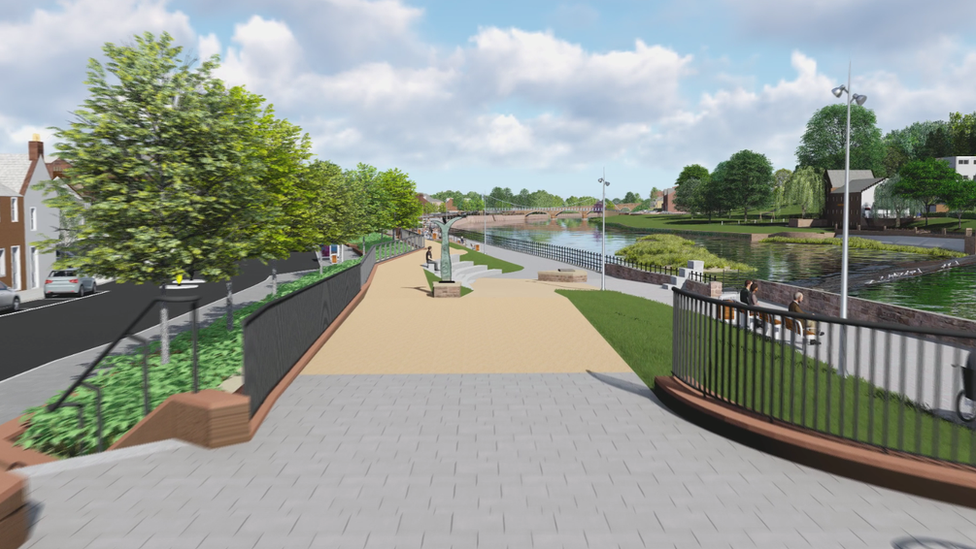Thirty-year flooding saga in Dumfries flows onwards
- Published
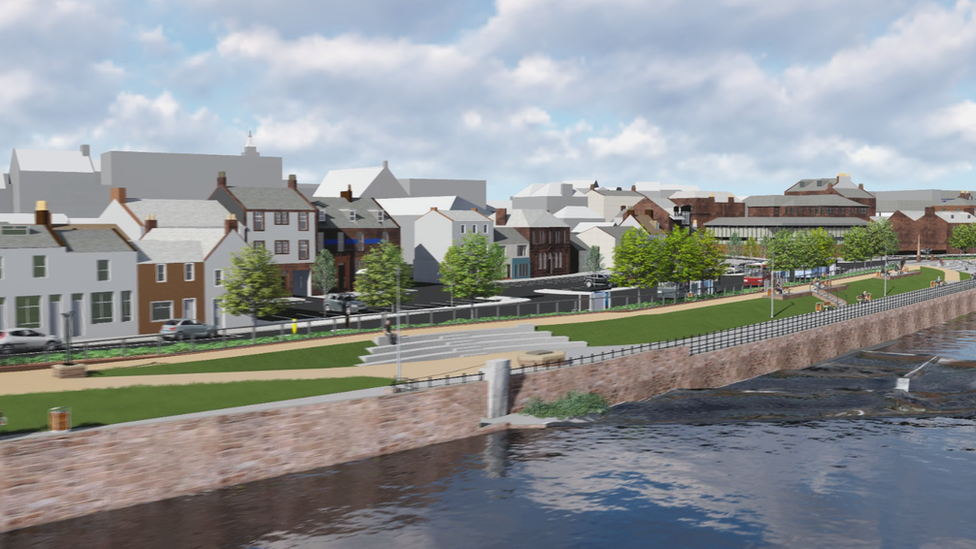
The latest flood protection plans look set to go to public inquiry
For the good people of Dumfries, flooding on the Whitesands has joined death and taxes in the old adage about the world's only certainties.
Every spell of heavy and persistent rain sparks worried looks at the fast-flowing waters of the River Nith.
For those who grew up in the town, it has been added to the lengthy list of things which have "aye been".
Efforts to tackle the issue - in their latest guise at least - can be traced back the best part of 30 years.
It was in the mid-1980s that the then regional council commissioned consultants to undertake a flood study and report back on what measures could be taken.
In 1988 a price tag of £2.2m was attached to building defences and a further £2.1 for drainage work.
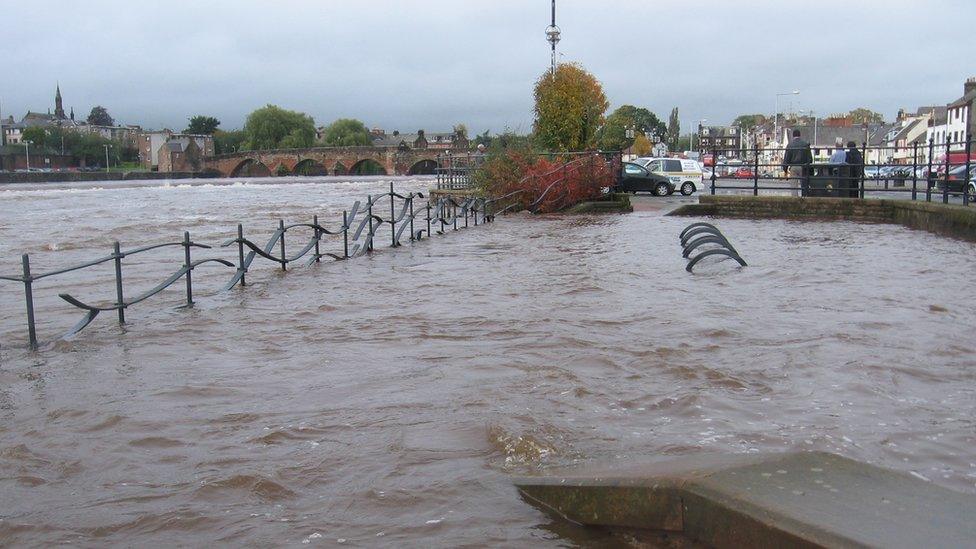
Flooding has become a familiar sight in the Whitesands area of the town
The council concluded that the overall impact of such measures would not be acceptable and opted, instead, for reliance on a flood warning system.
Fast forward about a decade and another study looked at the issue.
Direct flood defences with upstream storage was considered to be the preferred option based on the economic analysis.
It proposed a 1.4m fixed defence embankment with a demountable barrier on top to a maximum height of 2.3m.
The capital costs, like the waters of the Nith on a stormy day, had risen steeply to £8.7m.
By 2011, another study was commissioned - this time to review the previous work and produce a design for the flood protection scheme.
A project to protect the Whitesands was estimated to cost about £9.6m at that stage.
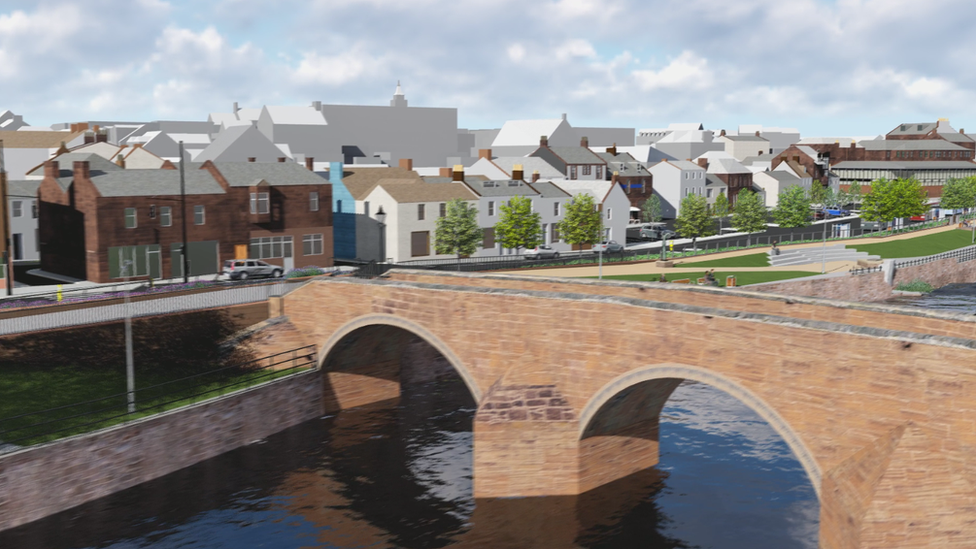
Opponents are concerned about the impact of the scheme on riverside views
As the process rumbled on, the flooding problems in the area continued to crop up.
In 2013, a bid was made to secure priority status for the project in Dumfries and Galloway Council's investment strategy.
Two years later and a life-sized model was put onto the Whitesands to give an idea of the scale of the project - with costs now having hit £15m.
All the while, opposition persisted to the proposals with various attempts to get them dropped.
The issue was raised in the Scottish Parliament and a Save Our Sands group campaigned against the scheme.
They were worried about the loss of views, reduction in parking and the ever-increasing price.
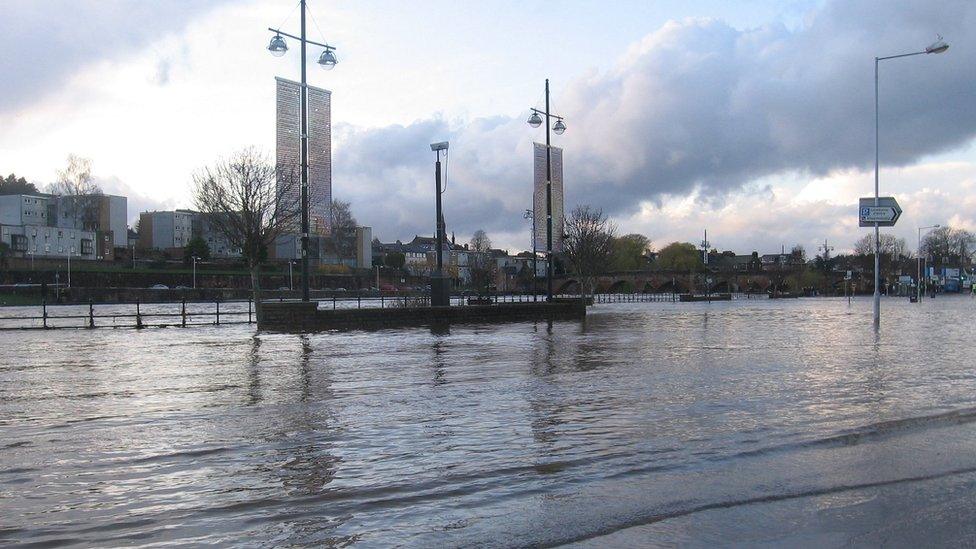
The proposals to protect the area have been referred to the Scottish government
However, it appeared as if - at the end of last year - a way forward had finally been found.
A bid to force the council to rethink the scheme failed and the path was cleared to let the now £25m project go ahead.
That had not taken into account a turn in the political tide at recent council elections.
The Labour group which had been running the authority as a minority was joined in coalition by the SNP which had campaigned with a promise to revisit the scheme.
It prompted the decision to refer the matter to the Scottish government which looks set to lead to a public inquiry.
A Scottish government spokesperson said this week that it had yet to receive that referral.
Time required
"Upon receiving a referral, an independent reporter from the Planning and Environmental Appeals Division (DPEA) would be appointed in due course to consider the proposed plans and make a recommendation to ministers," the spokesperson added.
The upshot is that more time will be required to discuss the project before any sign of work taking place.
Opponents will be pleased that there is still a possibility that the scheme could be shelved once and for all.
Its supporters must be increasingly frustrated by yet another delay to actually tackling such a long-standing issue.
And, meanwhile, Doonhamers will look at cloud-laden skies pretty confident in the knowledge that they will still bring the waters of the River Nith out onto the streets sooner or later.
- Published27 June 2017
